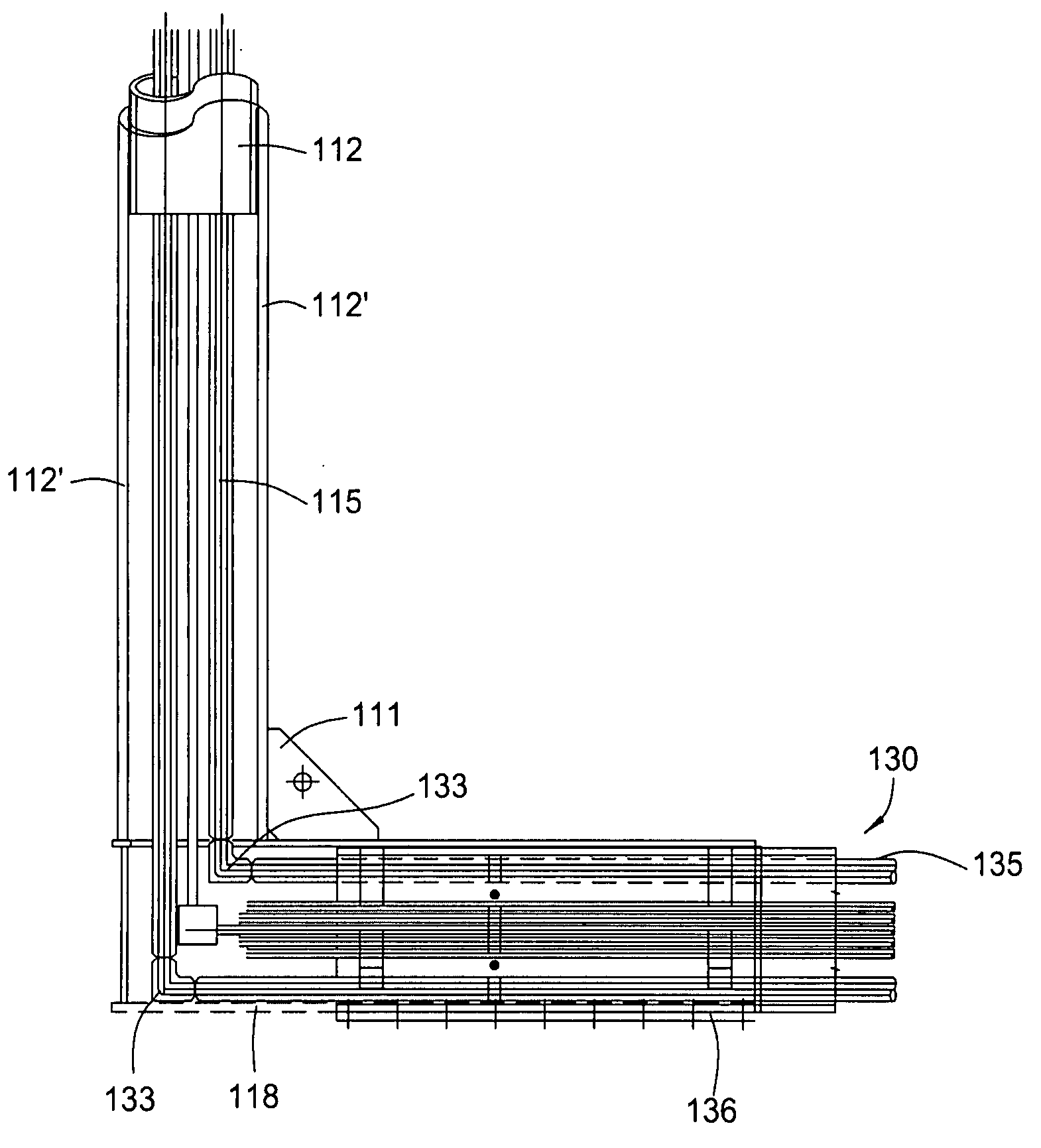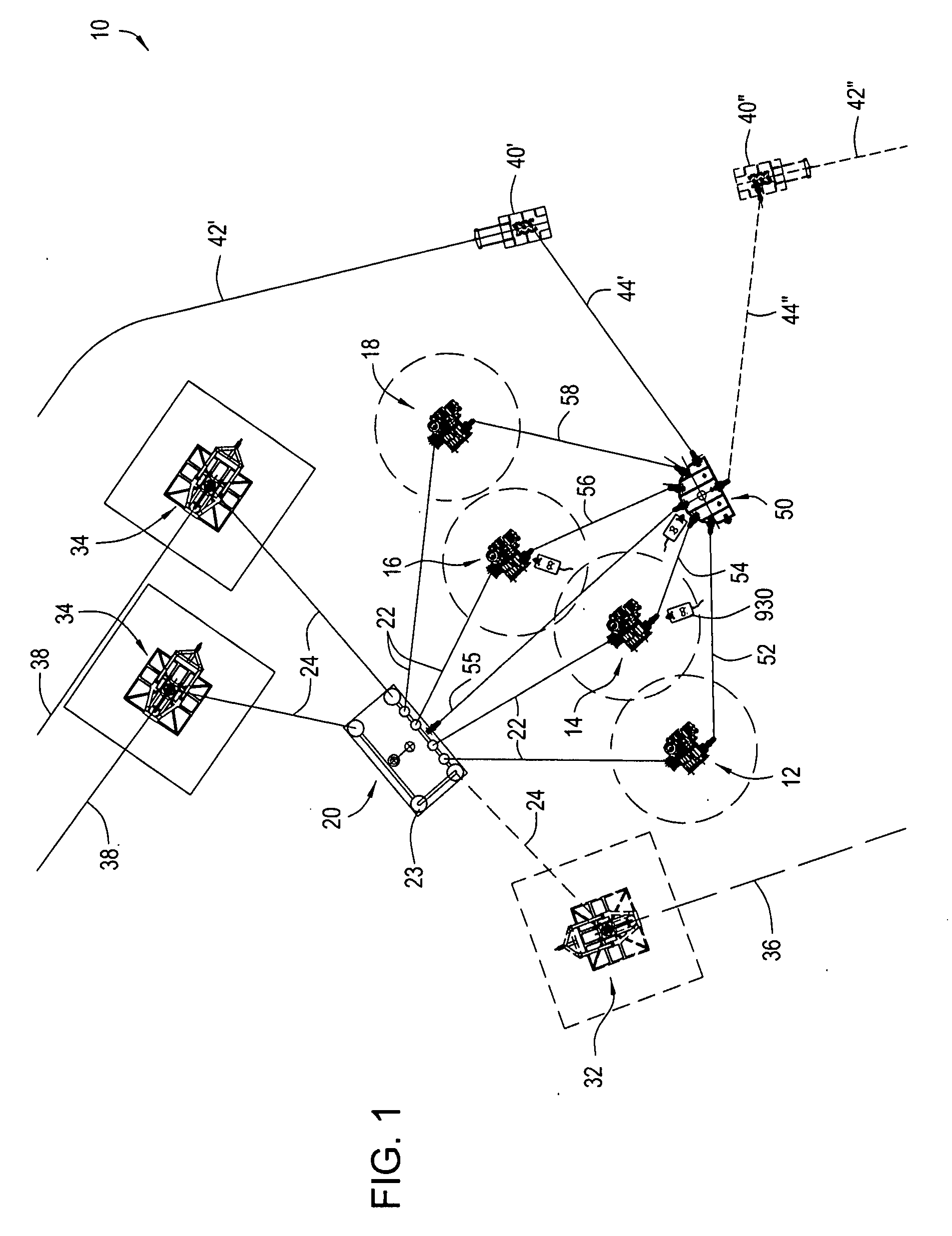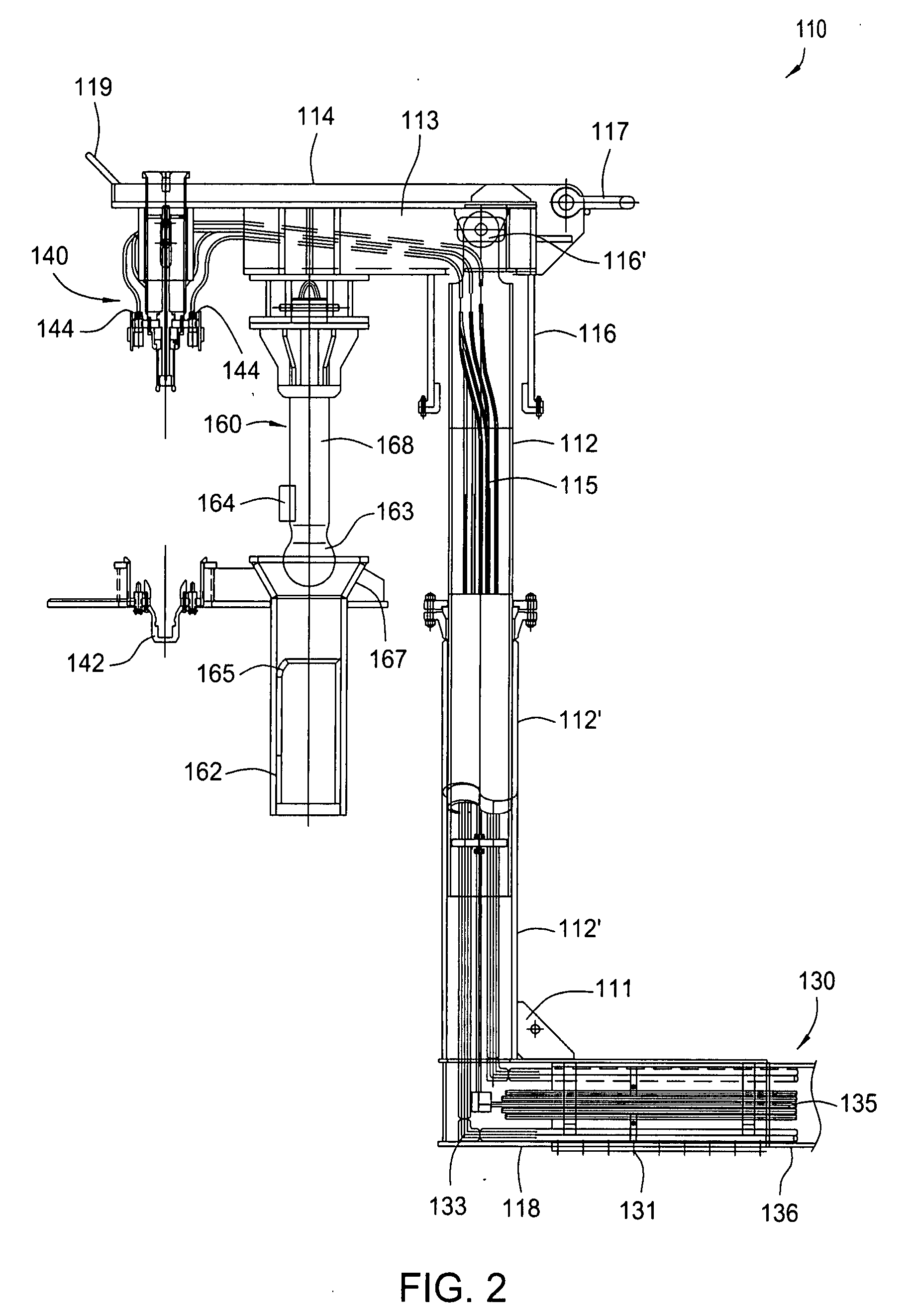Flying Lead Connector and Method for Making Subsea Connections
a technology of flying lead connector and subsea connection, which is applied in the direction of underwater drilling, drilling machines and methods, and wellbore/well accessories, etc. it can solve the problems of high cost of drilling and maintenance of deep and remote offshore wells, large pressure drop across the length of hoses, and inability to meet the requirements of rov involvement and power requirements, so as to reduce the installation time and reduce the power rating. , the effect of reducing the involvement of rov and reducing the impa
- Summary
- Abstract
- Description
- Claims
- Application Information
AI Technical Summary
Benefits of technology
Problems solved by technology
Method used
Image
Examples
Embodiment Construction
Description of Specific Embodiments
[0037] The following provides a description of specific embodiments of the present invention:
[0038] A flying lead is provided herein. The flying lead enables fluid communication between a first item of subsea equipment and a second item of subsea equipment in a marine body. The flying lead generally includes a first substantially rigid end kit disposed at a first end of the flying lead; a second substantially rigid end kit disposed at a second end of the flying lead; and a substantially rigid and substantially linear midsection. The midsection conveys two or more fluid communication lines between the first end kit and the second end kit. In addition, each of the first and second end kits is configured to be landed into a respective first and second item of subsea equipment by lowering the flying lead into the marine body with a spreader bar.
[0039] Preferably, each of the first and second end kits of the flying lead has an end kit connector for r...
PUM
 Login to View More
Login to View More Abstract
Description
Claims
Application Information
 Login to View More
Login to View More - R&D
- Intellectual Property
- Life Sciences
- Materials
- Tech Scout
- Unparalleled Data Quality
- Higher Quality Content
- 60% Fewer Hallucinations
Browse by: Latest US Patents, China's latest patents, Technical Efficacy Thesaurus, Application Domain, Technology Topic, Popular Technical Reports.
© 2025 PatSnap. All rights reserved.Legal|Privacy policy|Modern Slavery Act Transparency Statement|Sitemap|About US| Contact US: help@patsnap.com



